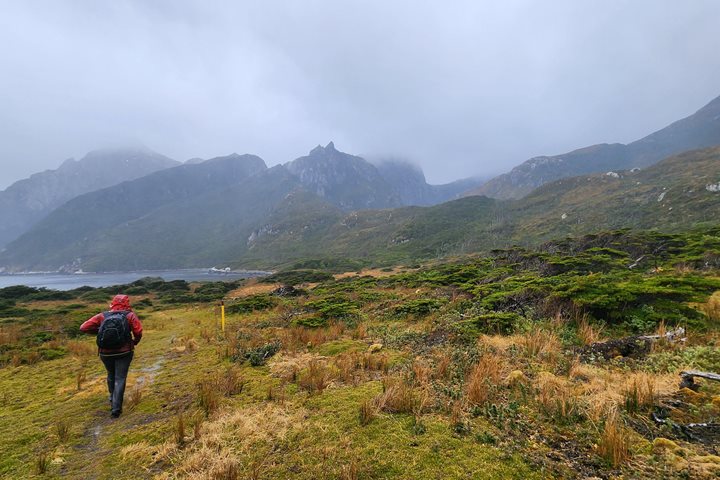Our “bumpy” day on National Geographic Orion began promptly at 7:30 this morning when our expedition leader Doug announced that we have reached the southernmost tip of the South American continent. This destination is known formally as Cape Horn, but more familiarly as the island at end of the world.
Getting here had been eagerly awaited by most, and the bridge and observation lounge soon began to fill at the coming of first light. Cape Horn is where the waters of the Pacific and Atlantic Oceans meet, giving way to the Drake Passage in the South. The prevailing westerly winds blow uninterupted across the Pacific ocean: the famous “roaring 40s” and “screaming 50s,” waves and winds that the Andean mountains deflect through the narrow gap between the Cape and the Antarctic peninisula. The mixing of the waters from these two oceans, combined with strong winds, present quite adverse conditions for those navigating through this region.
Conditions at sea were boistrous, but as a window of opportunity to land on Cape Horn opened, we prepared to go ashore. There we sureyed the Albatross monument and other historic buildings and artifacts and met with the family of Cape Horn’s current lighthouse keeper.
A superb lunch was followed by an instructive iphone photogaphy course led by our National Geographic photographers. Prior to our evening recap, our naturalist highlighted the dynamic forces that determine Earth’s weather, climate, wind, ocean currents, tides, and El Niño activity, all processes of great complexity.
After our evening food delights, a short movie about rounding Cape Horn was screened before guests went off to bed for another round that following morning.









